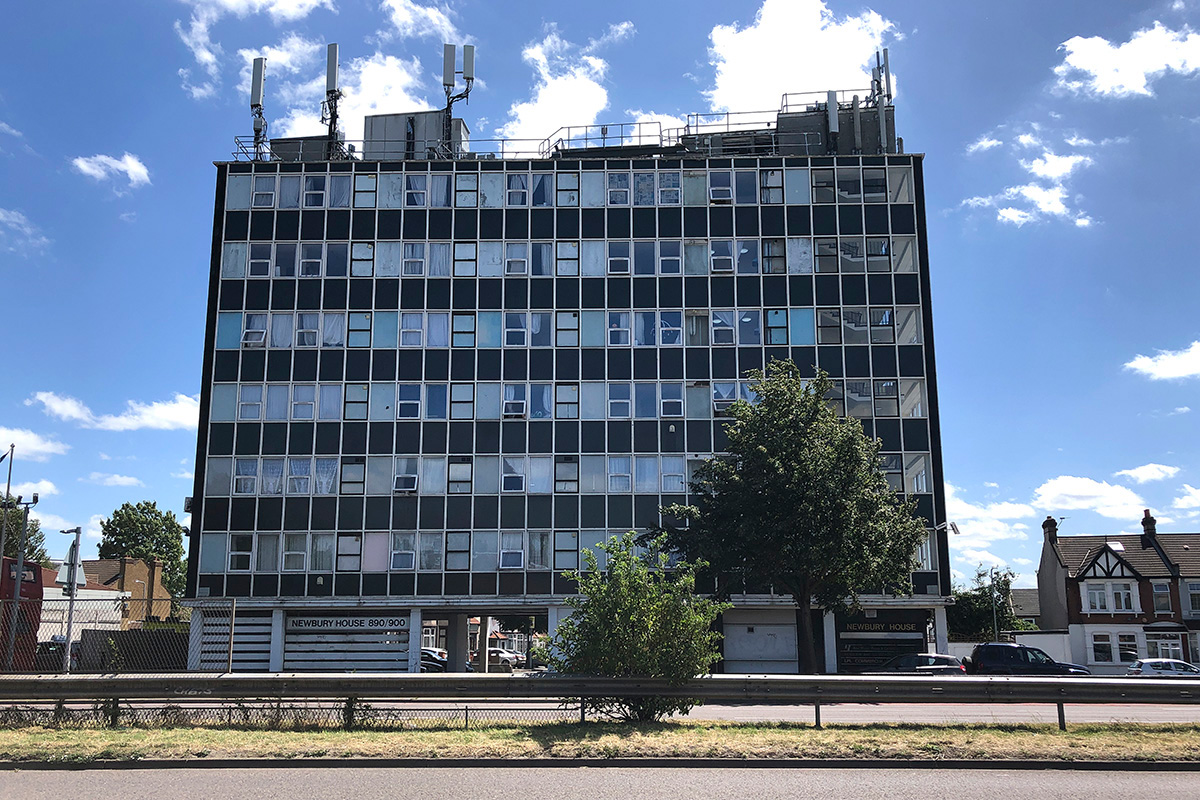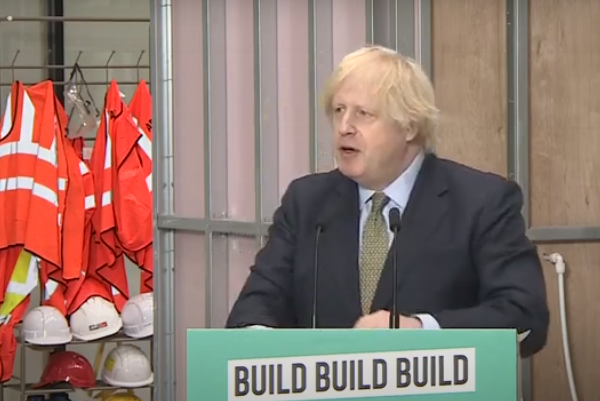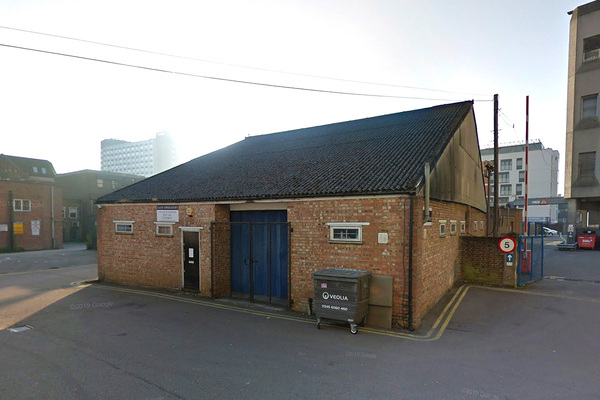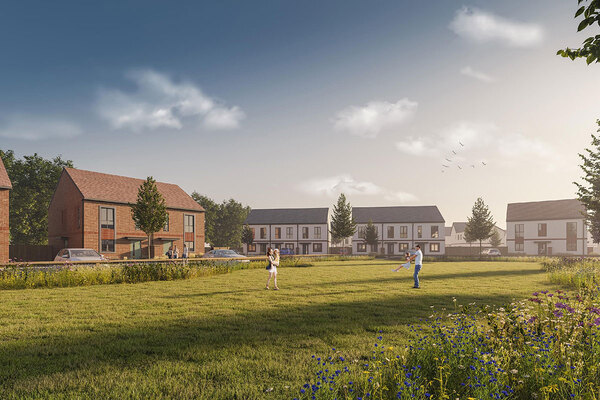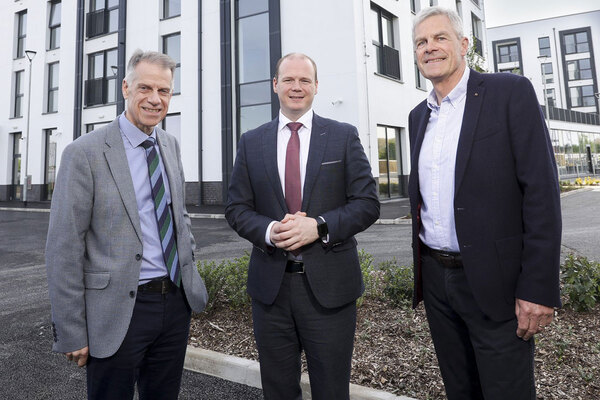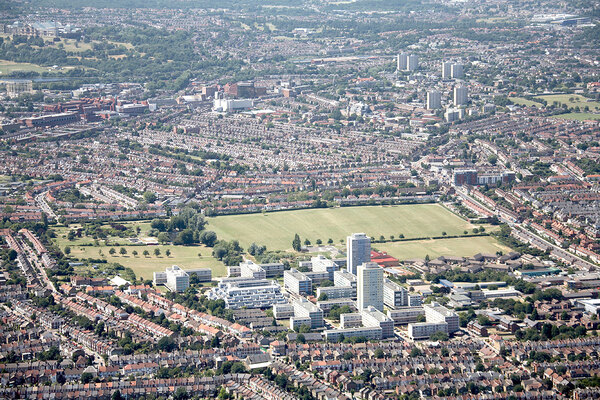You are viewing 1 of your 1 free articles
Permitted development wrongs: the problems with the PM’s planning deregulation drive
Last week’s announcement of an expansion to permitted development rights was met with concerns. Nathaniel Barker finds out if the sector is right to be worried.
How do you “build, build, build” your way out of a severe economic crisis caused by a global pandemic? Last week, Boris Johnson set out his government’s plan to do just that.
Speaking from a lectern emblazoned with the tripartite slogan, the prime minister announced £5bn of accelerated infrastructure spending through ‘Project Speed’. He also promised “the most radical reforms of our planning system since the end of the Second World War”.
Within an hour of the speech, a Downing Street press release revealed what the strong rhetoric meant in practice. From September, developers will no longer be required to submit a “normal planning application” to demolish vacant or redundant residential and commercial buildings and replace them with new homes. In addition, a “wider range of commercial buildings” will be allowed to convert into flats without planning permission, including shops which have shut down and become vacant during the pandemic. Third, building owners wanting to add new storeys to blocks of flats will be eligible for a “fast-track approval process”.
The government claims these measures will help “kick-start the construction industry” while making more effective use of existing buildings and protecting greenfield land. But councils and housing sector bodies were quick to warn that the plans could lead to poor-quality homes and the loss of potential future affordable housing.
Inside Housing takes a closer look at the changes and their possible ramifications.
In some ways, these announcements are not really all that radical, or new. They represent an expansion of permitted development rights (PDR), which allow homeowners or developers to carry out building work without planning permission. The loophole was widened significantly in 2013 under then-communities secretary Eric Pickles to allow commercial and office buildings to be converted into housing without a planning application.
Expanding PDR further to allow the demolition and redevelopment of commercial buildings as homes – now being vaunted as a key plank of the government’s post-pandemic economic rescue plan – was in fact tucked away in the 2017 Autumn Budget documents. A consultation including the proposal was launched in October 2018, and the government’s summary of responses admitted that less than a third of the 253 respondents thought it was possible.
“Generally, it was considered that such a right would go beyond what is capable of or appropriate to be delivered through a national permitted development right and that it would require extensive prior approval considerations,” the report noted. An impact assessment was promised but has not yet surfaced.
The 2013 expansion of PDR was intended to boost housebuilding numbers, and it has been successful in this respect, with 15,000 additional net dwellings being delivered each year. However, there were downsides. Planning is the mechanism through which councils can demand that developers deliver affordable housing as well as contributions towards infrastructure and public services. The Local Government Association (LGA) estimates that more than 13,500 affordable homes have been “lost” over the past four years as a result of PDR developers dodging the process.
There is clearly an irony in the government announcing a boost in infrastructure spending, while introducing a policy that will likely reduce the funding available for infrastructure projects.
When asked if the government intends to mitigate any potential impacts on affordable housing, the Ministry of Housing, Communities and Local Government (MHCLG) said the new rules “will make it easier for developers to deliver more homes – including affordable homes – on already developed land”, but it did not explain how.
Then there are the concerns about the standard of homes delivered. The LGA, the Royal Institute of British Architects (RIBA), the Royal Institution of Chartered Surveyors and the Town and Country Planning Association (TCPA) are among the bodies to have expressed serious misgivings. Even the government’s own Building Better, Building Beautiful Commission remarked of PDR in its final report that the policy has “inadvertently permissioned future slums”.
Many office-to-residential flats are as small as 13sqm – just a third of the minimum space standard recommended by the government. MHCLG’s Housing Health and Safety Rating System warns that a lack of space “has been linked to psychological distress and various mental disorders”, as well as problems such as “accidents and spread of contagious disease”. If a council assesses the hazard posed by a tiny home to be serious, it is legally required to order the building owner to rectify the issue.
Terminus House in Harlow has been described as a “human warehouse” (picture: Getty)
The question now is whether ministers will ensure these problems are not perpetuated in homes delivered through the latest PDR expansion. Number 10’s press release promised “better homes where people want to live”, but there has been a lack of detail on how this will be achieved.
Andrew Forth, head of policy and public affairs at RIBA, is not hopeful: “The fundamentals have not changed. We can’t see a huge number of levers that exist to stop poor-quality, unsuitable permitted developments going ahead.”
Julia Park, head of housing research at Levitt Bernstein, agrees: “I hope I’m wrong, but it doesn’t feel as though they intend to require their own minimum space standard to apply. If they did, they would have said so, because it would provide welcome reassurance.”
Regulations enabling two new storeys to be added to blocks of flats under PDR were laid in parliament shortly before last week’s announcement. The legislation also tweaked the rules to mandate that PDR schemes provide “adequate natural light to all habitable rooms” – unlike the 1 Wellstones building in Watford (see box). A welcome step, perhaps, but a small one.
Mike Kiely, chair of the Planning Officers Society, wonders if this is a sign that wider quality issues with PDR will not be fixed. “If they were going to sort other things, such as space standards, it would have been in there,” he says.
MHCLG insists the changes will lead to “well-designed homes”, but did not specify any measures to enforce design standards.
If the issues are not resolved, then widening the PDR loophole risks flying in the face of the government’s stated priorities on housing. The Conservative manifesto emphasised the need for “beautiful, high-quality homes”, improved building safety, environmentally friendly housing and offsite construction.
During his speech, Mr Johnson expressed his desire to “fix the problems that were illuminated during COVID”. Some of these problems were identified in a Public Health England report into why BAME people were worse affected by coronavirus. It found that cramped and poor housing conditions exacerbated the pandemic in these communities.
Fiona Howie, chief executive of the TCPA, argues it is “totally unclear how the associated announcements around extending PDR will achieve these priorities”. Ms Park goes further, calling it a “complete contradiction”.
The worst PDR schemes
Terminus House, Harlow
This 14-storey tower looming over Harlow Bus Station was once an office block but has been converted into more than 200 flats, many of which have just one openable window.
Owned by a private firm and used as temporary accommodation for homeless households – often from London boroughs – it has become something of a symbol for the problems with PDR. Last year, it was branded a “human warehouse” in national headlines, with young single mums telling of their fears about high crime rates in the building.
In February, Harlow MP Robert Halfon, a Conservative, told parliament that PDR has been “an unmitigated disaster” for the town.
Speaking to Inside Housing following last week’s announcement, he said he would be writing to housing minister Christopher Pincher about the issue.
“There must be rules in terms of permitted developments that I will be advocating for in the coming weeks,” he added.
Picture: Google Street View
1 Wellstones, Watford (pictured)
This small warehouse on an industrial estate is being converted into tiny studio flats, seven of which will have no windows at all.
Watford Council attempted to block the scheme on the grounds that the “oppressive environment would have a serious impact on the health of the future occupiers”.
However, the Planning Inspectorate overturned the council’s decision in July 2019, concluding that the issues did not breach PDR rules.
Newbury House, Redbridge
Newbury House sits next to east London’s busy six-lane A12. Again, it is a former office building repurposed into 60 flats now used as temporary accommodation.
The single studio flats range from just 13sqm to 15.6sqm in size, with kitchens comprised of just a hob and a sink, according to planning documents. A resident told The Guardian in 2018 that inhabitants were “packed in like sardines”.
Of course, building regulations will still apply – which ministers may argue can be used to enforce safety and low-carbon standards. Yet it is not hard to envisage an unscrupulous developer seeking to exploit PDR to deliver shoebox flats then hiring a similarly unscrupulous approved inspector to sign them off.
Ms Park is also concerned about new threats posed by the latest expansion of PDR. For instance, she worries about the impact of carte blanche conversions of closed-down shops: “It might make sense to consolidate high streets by converting the shops furthest from the centre into housing, but if we’re not very careful, net curtains and wheelie bins will start popping up along the pavements and make high streets less attractive, not more.”
Then there’s the question of how many homes these measures will deliver. “Frankly, I think the low-hanging fruit has pretty much been picked,” says Mr Kiely. Councils have already poured time into finding ways to develop dilapidated brownfield sites, including through bids to the government’s £400m Brownfield Land Fund – allocated on the same day as the PDR announcements – meaning relatively few are likely to fester long term.
As for the right to add two storeys onto blocks of flats, Mr Kiely predicts that while it could provide opportunities for social landlords, the associated structural and logistical difficulties will still be “quite limited”.
He is also concerned that the unfavourable characteristics of many sites affected by the new PDR could intensify quality issues: “If developers are happy to compromise, they’re going to be happy to compromise on all aspects.”
These views are not shared by Brian Berry, chief executive of the Federation of Master Builders, whose membership includes some PDR developers. “For a lot of good small builders, this is a potential growth market – there’s a lot of empty space above shops which could be brought back into use,” he says.
“At its best it offers really good potential to create more jobs in construction, take pressure off the countryside and improve our town centres, which would help them survive.” Nevertheless, he adds that he “totally gets” doubts about quality and feels the government should issue guidelines on design and space to avoid “a free-for-all”.
A workable solution to the problems associated with PDR is particularly vital within the current wider housing challenges in England. RIBA’s Mr Forth fears that “these are not going to be homes that are of interest to people who have options”. Some of the worst examples of PDR schemes in the country are often used as temporary accommodation for homeless households.
With Shelter warning that more than 225,000 private renters are at risk of losing their homes when the eviction ban is lifted next month and demand for temporary homes rising, there is a real risk that this latest round of planning deregulation could end up having a grim legacy.
Update: at 10.30am 10/07/20 the article previously incorrectly stated that the Housing Health and Safety Rating System (HHSRS) deems a one-person flat smaller than 16sqm to be a Category 1 Hazard. In fact, the HHSRS does not specify what constitutes a space hazard. This has now been amended.
